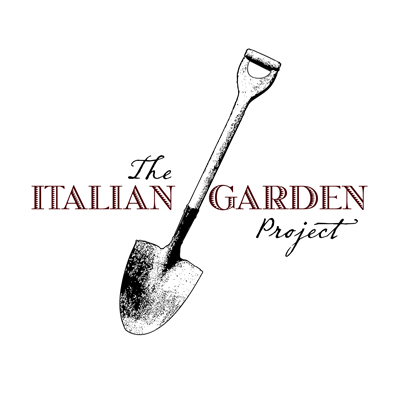Italian Gardeners Bloom Wherever They are Planted
Italian gardeners never shy away from hard work, add to that their keen knowledge of growing and you’ve got a powerful combination. Their wisdom and tireless spirit were the keys to success in their adopted country, and nowhere is that more evident than in the case of Cesare Restani, one of the most successful nurserymen of the early 20th century. According to the author of a profile on Restani published in San Francisco Business Magazine in 1928, the recipe for Restani’s success “was work, and after that more work. It involved getting one’s feet wet, getting one’s hands muddied. It has meant years of rising before the sun, of working in the hothouses from five-thirty in the morning until seven and eight o’clock at night. It has meant plodding and determination and careful husbandry and patience and study … It has meant growing.”
Last week we were lucky enough to spend the afternoon with Cesare’s grandson, Mark Restani, who shed some light on his grandfather’s incredible story, and the Bay Area’s extensive nursery and flower industry, which was run in large part by Italians. For the first half of the 20th century, acres upon acres of southern San Francisco were home to one of the largest flower industries in the world. It was here that Mark’s grandfather Cesare owned and operated 17 acres of greenhouses, making him one of the most successful nurserymen in the world at that time.
The Restani brothers including Cesare (far right) on the vegetable farm in Colma, CA.
Cesare Restani, an Italian immigrant born in a small town outside Genoa, arrived in San Francisco penniless and without formal education but ready to work. He had followed his older brother Giovanni across the world in search of new opportunities and soon began working on his brother’s vegetable farm in Colma, just a few miles south of San Francisco. Although the work may not have been drastically different than life on his parent’s farm in Liguria, the $25 a month that Cesare earned was enough to fuel his dreams for bigger things.
Cesare had ambition, and California had land. He scrimped and saved and after two years had enough money to buy himself a five acre plot and a 200 foot greenhouse. By his own admission he knew nothing about greenhouses or his chosen product – potted ornamental ferns. According to the San Francisco Business Magazine article, Restani was undaunted by his lack of greenhouse knowledge and believed in learning by experience “so, when he wished to learn how to grow hothouse plants he didn’t go to school, didn’t go to books, but got down on his knees and asked old Mother Earth and his plants to tell him their secrets.” Restani may not have been formally educated, and he may not have known much about hothouses, but he knew about plants from a lifetime spent growing and he eventually mastered all there was to know about ferns.
From there Cesare sought to expand his business, called Geneva Nursery, and began diversifying his product line by growing azaleas, lilies, roses, poinsettias, hydrangea, pineapples, and many other ornamental plants and flowers. Just about anything you could grow and sell in a pot, he did. He purchased 12 more acres and opened Sunnyvale Nursery, expanding his total holdings to 17 acres of greenhouses.
By the mid-1920s his greenhouses were filled with millions of plants. His nurseries were very large and very modern. They had central heating boilers and he could control the temperature of each individual greenhouse, regulating it according to the needs of the plants it contained. He employed 12 of his nephews and an additional 30 workers, mostly Italians who were also housed on the property. His potted plants were sold up and down the Pacific Coast, and his son Albert later expanded to shipping flowers across the entire United States and to Hawaii. Cesare’s operation was so immense that the same 1928 article boasted that he could “walk through lanes of plants in his hothouses for three miles without passing any plant twice.”
In 1927 Restani had the honor of hosting the 50th anniversary banquet for the California floral industry. He decided to host the event in one of the greenhouses. According to the San Francisco Chronicle Examiner, the celebration featured the largest banquet table in the world, measuring over 150 feet long. Guests included the Mayor of San Francisco, the Governor of California, and former US President William Taft. At the event Restani was presented with a golden shovel for his accomplishments in the floral industry. Hosting a US President is no small honor for any man, but for an Italian-born immigrant to host such a dignitary, especially in the wake of the 1920’s nativist political sentiments was a sign of major accomplishment.
Although he was a busy and successful businessman, Cesare was devoted to his family and spent time teaching them the agricultural and food traditions of his homeland, many of which his descendants still maintain today. His grandson Mark has a small vineyard on the site of the former Geneva Nursery, and he and his children and grandchildren enjoy making wine, foraging for wild porcini mushrooms, curing prosciutto and salami, and curing olives.
Mark feels passionately about the importance of passing down these earth-based food and gardening traditions. He understands the profound influence that grandparents, in particular, can have on their grandchildren. Not only was his paternal grandfather an Italian immigrant, but his paternal grandmother, Bianca Roselli Restani, emigrated from Genoa. His maternal grandparents, Placido and Allasondria Montafi, were from the town of Coreglia in the province of Lucca. They settled in Occidental, California where they owned a ranch and farmed the land. Mark feels fortunate to have grown up surrounded by these loving, hardworking, and self-sufficient people. He wants to pass on their values to his own family, knowing that from the earth grow the ties that bind the family together.








